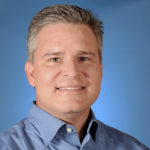
Older adults increasingly want to age in place, and many of them live alone.
If living unassisted, however, older adults are at risk for falls in and out of their residences, which can lead to injuries. A senior is treated for a fall in the emergency department in the U.S. every 13 seconds, according to a study from Carnegie Mellon University’s College of Engineering. Fear can prevent older adults from confidently living active lifestyles.
Simple technology, however, can discreetly monitor and assist seniors to help ensure their safety and health. Devices such as wearable mobile personal safety technology, or mPERS, and connected tech such as motion sensors, allow older adults to feel safe and never really alone.
A case study in mPERS
An mPERS system provides emergency response, as well as fall detection technology, to automatically report incidents to local authorities and relevant caregivers.
The growing need for mPERS systems caught the attention of nationwide monitoring facility Dynamark Security Centers, which entered the market with a national program after testing devices. “In the trial, we were testing the unit to determine whether it had all the standards we look for,” said Hank Groff, senior vice president of sales and business development at Dynamark Security Centers.
In the end, Dynamark chose the Numera Libris mPERS device from Nortek Security & Control. It combines activity tracking, emergency response and fall detection into a pendant device that older adults can wear anywhere.
The device’s advanced fall detection was a strong selling point, according to Dynamark. During testing, “the most appealing part of the Libris was the fall detection technology that differentiated between someone who laid down to take a nap or who experienced a fall,” Groff said.
The accuracy of such systems is crucial. Inadequate fall detection technology sometimes can send false alarms, needlessly worrying users and caregivers, negatively affecting the monitoring service provider and sometimes causing the older adult not to wear it.
An mPERS unit has to work well or it doesn’t serve its purpose. Some mPERS devices that Dynamark tested didn’t have sufficient algorithms to differentiate between a fall where emergency response was required, another event such as napping, or setting the device down on a table, Groff said.
The device that Dynamark chose also has a cloud platform, EverThere, which allows care teams — family members, healthcare professionals and friends — to receive SMS or email alerts based on fall detection, device inactivity or device battery status.
A new innovation: Wearables and smart homes
Many new technologies designed with seniors in mind are based around the idea of traditional mobile personal safety but are taking the shape of wearable devices. With wearables, a device’s success relies solely on the user regularly using it, remembering to put it on at appropriate times and making sure that it remains charged.
When wearables aren’t a good solution, another way that seniors can age in place is with a smart home system. Such systems allow family members to ensure that the home is secure and that their loved ones are active at the appropriate times.
Many smart home systems come with a smartphone app whereby caregivers can set the devices and check on someone’s status remotely. This way, older adults are able to go about their normal activities with nonintrusive assistance.
Smart home system users prefer to control the systems via their mobile devices, found a study by J.D. Power and Associates, and the latest technology can make that possible. For example, caregivers may worry about the temperature at their loved one’s home — that it’s not too cold in the winter or too warm during a heat wave. With a smart thermostat, however, caregivers can set the temperature to increase or decrease throughout the day automatically, or they can adjust it remotely, all from a cellphone, without going into the home, based on daily weather changes.
Smart lighting also can be set up on a schedule, and with a motion detector, lights can be turned on when needed to brighten hallways and rooms at night. Caregivers also can connect their smartphones to a smart video doorbell to answer a loved one’s door remotely, when the loved one is not home, or to protect against potential scammers who target seniors.
Smart security devices also can provide peace of mind to caregivers, enabling them to check to make sure that windows are closed and doors are locked at night. Other safety devices, such as glass break, leak and smoke detectors, can provide the same function, to help caregivers make sure that their loved ones are safe. When hooked up to a monitoring system, emergency response can be dispatched if either is activated.
Customers who had purchased a home security system in the past 12 months ranked a smart smoke detector as the most important device, on average, in a J.D. Power and Associates study.
If a true home security system is desired, it is ideal to provide seniors with a professionally installed and monitored system, such as 2GIG from providers such as MONI Smart Security. Such systems are customizable with different security features and have safety devices, such as the Smoke Detector Sensor, to retrofit systems to make them smart and able to be monitored by the caregiver.
Aging in place is becoming easier for both seniors and their caregivers, thanks to wearable technology with fall detection that personally protects those who are living independently and smart home systems that provide hands-off assistance and nonintrusive remote monitoring. It can extend the period of independent living for seniors, providing a transition period between full independent activity and living with a family member or in a higher-acuity setting.
Matthew Campbell is vice president for sales and business development for the health and wellness division for Nortek Security & Control.
McKnight’s Senior Living welcomes marketplace columns on subjects of value to the industry. Please see our submission guidelines for more information.


